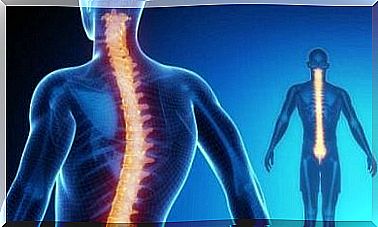Do You Have Experiential Avoidance Disorder?

The classification of psychological disorders and their therapies is constantly changing. One model of the third wave therapies is called the Acceptance and Commitment Therapy. It says a lot about the psychological suffering caused by experiential avoidance disorder.
There are many examples of experiential avoidance disorder. It often occurs in situations that a person with this disorder finds undesirable. They will then try to avoid dealing with the situation by avoiding it or running away.
But not wanting to deal with discomfort or wanting to walk away instead of accepting it is not a disorder. It’s actually just a normal reaction that we see in all kinds of animals. The disorder occurs when a person has rigid thoughts such as,
- “I have to feel good to do things”
- “My work makes me unhappy”
- “I can’t bear to be nervous, I want this to stop”
All these are sources of discomfort that do not allow you a single moment of rest.
How do you know if you have experiential avoidance disorder?
These are the things that determine whether you have experiential avoidance disorder:
- You feel constantly overwhelmed by thoughts and feelings related to ‘feeling bad’, ‘being sad’ or ‘fighting to feel good’.
- Your mind constantly bombards you with thoughts that fight against discomfort, uncertainty or doubt.
- Much of your daily time is spent controlling these thoughts.
- Your daily life revolves around “ending the discomfort” before you can get your life back. You start to feel like there’s nothing you can do. That feeling will grow stronger until those thoughts disappear.
- You wait until you feel okay. Only then will you do the things you love (going to the park with your kids, spending time with friends, or walking on the beach).

Where does experiential avoidance disorder come from?
The origin of experiential avoidance disorder is that a person deals with discomfort in a psychologically rigid way. The person does this by avoiding it or by running away. This inability to adapt causes experiential avoidance disorder. The life of everyone with this disorder revolves around avoiding painful feelings or thoughts.
What does being psychologically rigid mean? The person closes off from painful thoughts, emotions, or memories. He is not flexible. In addition, they will continue to perform the daily activities that give them a sense of well-being. They do so even though they are one or many sources of discomfort. They feel that they have to ‘feel good’ before they can enjoy anything.
When someone already has a psychological problem such as anxiety or depression, this lack of flexibility has a negative influence on them. When you don’t accept the discomfort of anxiety or depression and try to put an end to it and take up your life again, there are two consequences:
- Focusing your life on the discomfort and trying to control it will only make it worse. For we must remember that our mind never stops working. It’s like a kind of cauldron over an endless fire. If you try to stop thinking about the sadness and fear, you will end up using that thought even more as fuel for the flame.
- Turning your daily life into a struggle against discomfort reduces the affirmations or rewards you can “strive” for. You will have fewer activities that give you a good sense of well-being. In addition, you will neglect your personal relationships and isolate yourself in the discomfort.
The pitfall of ‘a good feeling’
We live in a society that promotes well-being and pleasure and wants to keep suffering as far away as possible. We view crying, being sad and feeling anxious as something bad. So when you experience one of these feelings or emotions, you fight against it.
The more this “good feeling” becomes the main and central element of your life, the more you fall into its trap. Searching for a perfect sense of well-being is exactly what makes you so vigilant. You focus on the negative emotions that are actually normal. But the purpose of these emotions is to enable adaptation.
By worrying about whether you feel good or bad, you will end up bringing about a very unpleasant psychological experience. You only give the negative emotions even more importance. By pushing these negative psychological experiences (thoughts and feelings) away, you make them stronger.

The Consequences of Experiential Avoidance Disorder
On a social level, the consequences of experiential avoidance disorder are extremely important. You wait until you feel good to go to the movies, spend time with friends, go back to school, or date. This also applies to an infinite number of other things. You develop habits that try to avoid unpleasant psychological experiences. Months and years pass as your life focuses entirely around this avoidance behavior.
That’s how you become a true expert at doing what you don’t want to do. You determine your wants and desires based solely on what you are trying to avoid. Your identity and expectations for the future then become very weak.
Experiential avoidance will only aggravate the symptoms associated with discomfort. It will also make your emotional life worse. That is why Acceptance and Commitment Therapy (developed to overcome experiential avoidance disorder) focuses on accepting discomfort. It also tries to achieve goals based on personal values.
The treatment of experiential avoidance disorder
First, you can find the solution to this disorder in acceptance. That means unconditionally observing your psychological experiences such as thoughts, emotions and feelings and without judgment. Acceptance and commitment therapy uses several strategies: mindfulness, cognitive diffusion, and therapeutic metaphors to achieve that goal.
Second, the treatment of experiential avoidance disorder restores the importance of personal values and their role when confronted with emotions. This is where the word “commitment” in this therapy comes from. It tries to encourage you to connect with your values in any situation. In addition, it tries to stop the struggle against discomfort.

Fighting this disorder is difficult and an arduous journey. But it is something that you must do so that you can escape those traps of thoughts and rigid beliefs. Because they are things you use to feel good. But in the end, they make you feel worse. Let your personal values be the center of your life. Accept the discomfort that is inherent in life. You will feel freer and happier.









